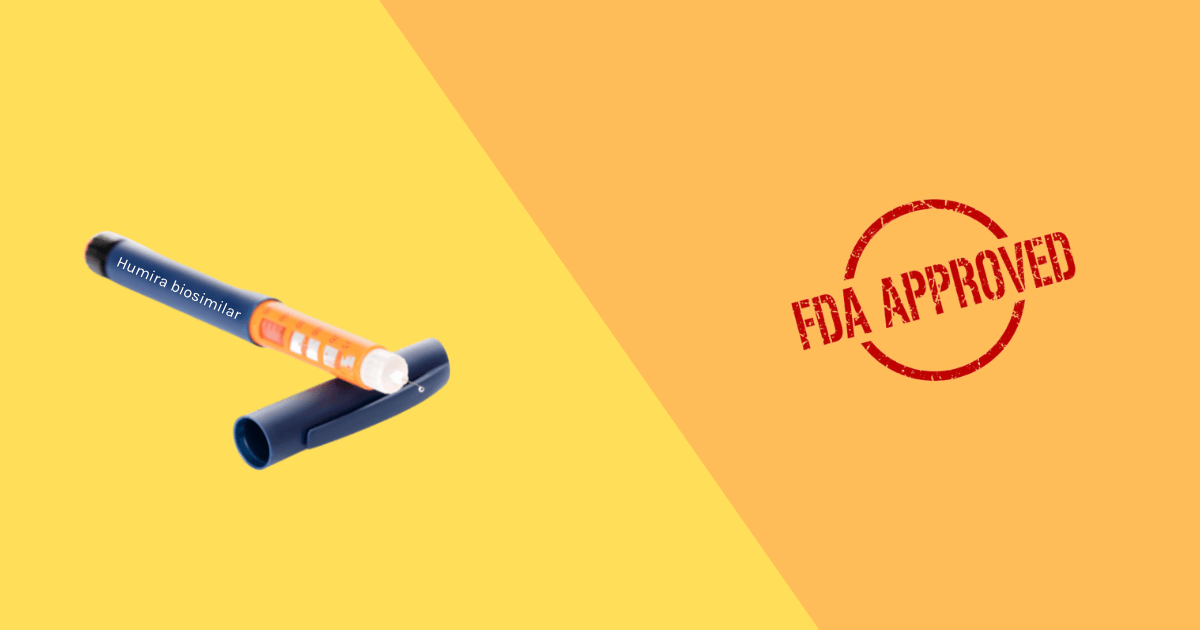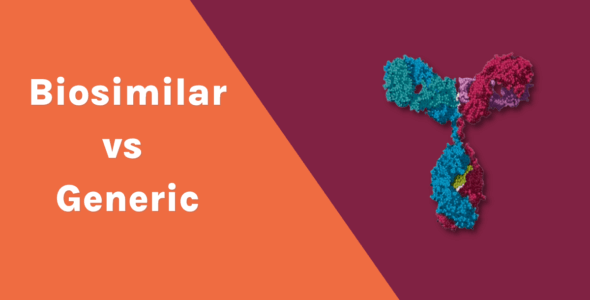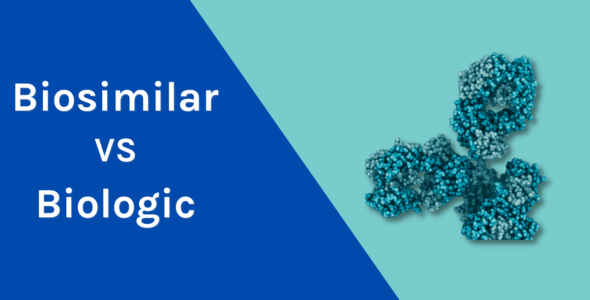FDA approves Humira biosimilar, adalimumab
Table of contents
- What is Humira (adalimumab)?
- Which biosimilar versions of Humira have been approved by the FDA?
- What's the difference between a biosimilar and a generic drug?
- How much will Humira biosimilar cost?
- When will Humira biosimilar become available?
- How do you use Humira?
- What are the side effects of Humira?
- How much does Humira cost?
Humira is an expensive biologic medicine that is widely used to manage symptoms of rheumatoid arthritis (RA) and several other autoimmune conditions. It’s a tumor necrosis factor (TNF) blocker drug and is one of the top-selling prescription drugs in the world. The manufacturer, Abbvie, reported net revenue of $17.33 billion in 2021 in the United States for Humira.
As of July 2022, the FDA has approved 7 Humira biosimilars. Learn more about which Humira biosimilars options will become available in the near future for you to start saving on this medication.
What is Humira (adalimumab)?
Humira is a monoclonal antibody that binds to TNF alpha, inactivates TNF alpha receptors, and reduces the effects of a substance in the body that causes inflammation.
It is FDA-approved for the treatment of:
- Moderate to Severe Rheumatoid Arthritis
- Moderate to Severe Chronic Plaque Psoriasis
- Moderate to Severe Crohn’s Disease
- Moderate to Severe Pediatric Crohn’s Disease
- Moderate to Severe Ulcerative Colitis
- Moderate to Severe Pediatric Ulcerative Colitis
- Psoriatic Arthritis
- Moderate to Severe Hidradenitis Suppurativa
- Ankylosing Spondylitis
- Moderate to Severe Polyarticular Juvenile Idiopathic Arthritis
- Non-Infectious Intermediate, Posterior, and Panuveitis
Humira is manufactured by Abbvie and was first approved by the FDA in 2002. Sales of AbbVie’s blockbuster drug Humira have accelerated since the date it was initially approved.
Which biosimilar versions of Humira have been approved by the FDA?
The following Humira biosimilars have been approved by the FDA:
| Biosimilar name | Approval date | Manufacturer |
|---|---|---|
| Yusimry (adalimumab-aqvh) | December 2021 | Coherus BioSciences |
| Hulio (adalimumab-fkjp) | July 2020 | Viatris |
| Abrilada (adalimumab-afzb) | November 2019 | Pfizer |
| Hadlima (adalimumab-bwwd) | July 2019 | Merck & Co |
| Hyrimoz (adalimumab-adaz) | October 2018 | Sandoz |
| Cyltezo (adalimumab-adbm) | August 2017 | Boehringer Ingelheim |
| Amjevita (adalimumab-atto) | September 2016 | Amgen |
What’s the difference between a biosimilar and a generic drug?
A biosimilar is a biologic medical product that is similar to another already-approved biological product, or “reference product.” Both are derived from living organisms and are manufactured through highly controlled biotechnology processes. Generic drugs are copies of brand-name drugs and are approved by the U.S. Food and Drug Administration (FDA) to be interchangeable with the brand-name version.
While generic drugs must have the same active ingredient as the brand-name drug, biosimilars may have minor differences in their manufacturing process or inactive ingredients. Biosimilars must also meet the FDA’s safety, efficacy, and quality standards.
The FDA has a pathway for approving biosimilars that demonstrates they are highly similar to an already-approved biological product and have no clinically meaningful differences in terms of safety and effectiveness from the reference product. There are currently several biosimilars approved by the FDA, and many more are in development. Unlike generic drugs, biosimilars are not identical to the reference biological drug. As biological drugs are manufactured using living cells and processes, the biosimilar drug may have minor differences from the reference biologic product. Nonetheless, biosimilars must prove that these differences are not clinically meaningful to obtain FDA approval.
RELATED: Biosimilar vs generic
Is Generic Humira available?
Unfortunately, there is no generic Humira available. As Humira is a biologic product, lower-cost biosimilar versions of Humira are expected to become available sometime in 2023.
Is there a cheaper alternative to Humira?
There are several other medications that work similarly to Humira or treat similar conditions. The prices of these medications will vary by your insurance plan. Check with your insurance provider and find out what is your copay and deductible for these medications. Always check with your healthcare provider before considering switching to any other medication.
- Methotrexate
- Remicade (infliximab)
- Orencia (abatacept)
- Rituxan (rituximab)
- Xeljanz (tofacitinib)
- Cimzia (certolizumab pegol)
- Simponi (golimumab)
- Enbrel (etanercept)
- Kevzara (sarilimumab)
- Actemra (tocilizumab)
- Kineret (anakinra)
- Imuran (azathioprine)
- Neoral (cyclosporine)
- Plaquinil (hydroxychloroquine)
- Arava (leflunomide)
- Azulfidine (sulfasalazine)
- Olumiant (baricitinib)
- Rinvoq (upadacitinib)
- Benlysta (belimumab)
- Taltz (ixekizumab)
How much will Humira biosimilar cost?
As there are no biosimilar versions of Humira yet on the market in the United States, it is not yet possible to know the estimated price. However, 7 biosimilar versions of Humira have already been approved by the FDA by separate drugmakers that will likely compete for market share which ultimately leads to lower prices for consumers, as is the case with generic drugs.
When will Humira biosimilar become available?
Amjevita and Cyltezo were the first biosimilar versions of Humira to be approved by the FDA. Although the first Humira biosimilar, Amjevita, was approved by the FDA in 2016, the manufacturer of Amjevita, Amgen, agreed to a settlement with the manufacturer of Humira, Abbvie, not to sell the product in the United States until January 31, 2023. Similarly, Pfizer had also reached a settlement agreement with Abbvie that prohibits the sale of Pfizer’s biosimilar, Abrilada, until November 20, 2023. As a result, the first expected version of Humira biosimilar is expected sometime in 2023.
How do you use Humira?
Humira should be stored in its original packaging in a refrigerator (36°F to 46°F) until you are ready to start using it. You can leave your Humira prefilled syringe or pen out of the refrigerator for 15 to 30 minutes before injecting it. You should not use the product if the liquid is cloudy or discolored, or if it has flakes or particles in it.
When using the Humira Pen:
- Do not remove the caps until right before you are ready for the injection.
- When the plum-colored button on the Humira Pen is pressed to give your dose, you will hear a loud click which means that the injection has started.
- The injection is complete when the yellow indicator fully appears in the window view and stops moving.
When using Humira prefilled syringe:
- Always hold the prefilled syringe by the body of the syringe with the needle pointing down.
- Do not crush or drop Humira. The prefilled syringe is glass.
If you forget to take Humira, inject a dose as soon as you remember. You should then take your next dose of Humira at your regular scheduled time.
What are the side effects of Humira?
The most common side effects of Humira are:
- injection site reactions (pain, redness, rash, swelling, itching, or bruising)
- upper respiratory infections (sinus infections)
- headaches
- rash
- nausea
Taking Humira can also increase your risk for serious infections that could lead to a hospital stay or death.
How much does Humira cost?
Humira costs up to $77,000 per year for those without insurance and up to $6,000 per year for those with insurance. The price of Humira continues to increase year after year.
Why is Humira so expensive?
Humira is so expensive because it is a brand-name medication with no biosimilar or generic alternatives available for sale. Humira has been a blockbuster TNF inhibitor drug for Abbvie. Brand-name drugs are always more expensive than generic drugs. The FDA-approved biosimilar alternatives to Humira will likely be much less expensive than Humira once they are available for sale.
Medically reviewed
A medical professional has reviewed this article.


Jamie Winn, PharmD
Jamie Winn, PharmD
Dr. Jamie Winn received his Doctor of Pharmacy in 2002 from the University of South Carolina College of Pharmacy, Columbia, SC. Jamie is a medical reviewer for NiceRx.




